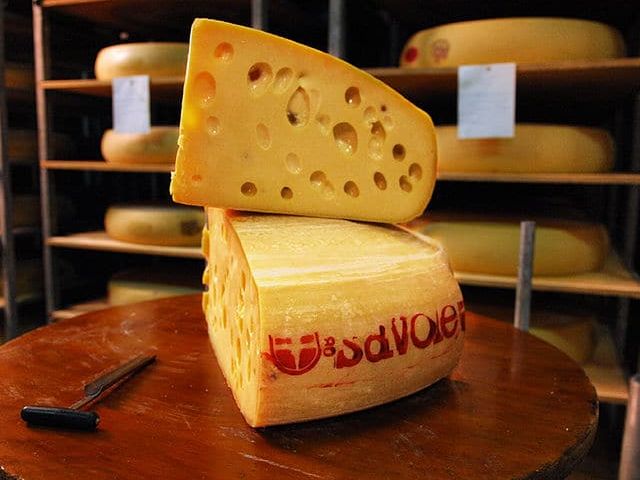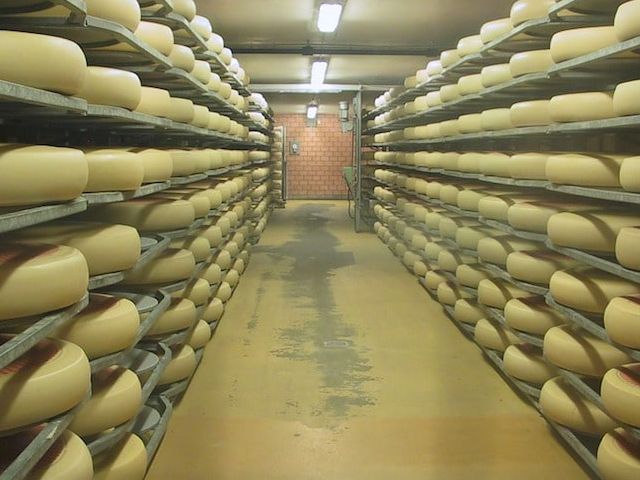What do mice eat in cartoons? A good gruyere? No, an emmental, that cheese with characteristic holes. Don’t mix up the largest of French cheeses anymore, learn about it and to taste it properly !

Emmental, gruyère, comté, what differences?
In the kitchen or around the table, it’s often confusing : “Could you pass me the gruyere ? No, it’s the emmental ! »
The three of them are part of the family of hard cheeses but they each have their characteristics. Their origin and their maturing is what differentiates them!
The Swiss Gruyère is characterized by a full-bodied taste and especially the absence of holes!
The French Gruyère has small openings and a sweeter taste. The Comté is produced in Franche-Comté and is characterized by strong and fruity aromas. And what about the emmental then ?
For our Swiss neighbours, the Emmental is a cheese with large irregular holes, originally produced in the Emme Valley in the Berne Canton. The emmentaler (that’s its name) has a Swiss AOC. It smells like mountain pastures !
In France, the difference between the gruyere and the emmental is above all a question of holes. Those in the emmental are bigger!
It is the openings that give the wheel of Emmental this curved shape that the Gruyère does not have…
How do you properly choose your emmental ?
Emmental often carries the image of a supermarket cheese without much taste cheese and yet this cheese also knows how to be beautiful and good. Let’s go to the French Alps where the emmental is known as the Kings of the Gruyères !
In the Savoy land, the emmental enjoys an IGP (protected geographical Indication). If you want to (re) discover the great taste of this cheese, opt for the emmental of Savoy IGP which draws its fruity flavors from the mountain pastures. It is exclusively manufactured and matured in Savoie and Haute-Savoie. The yellower its cheese, the better it is !
The grand cru emmental Est-Central is not left out. Produced in Franche-Comté and Rhône-Alpes, he also has an IGP and Red Label. Like the emmental from Savoy, this cheese is made from raw milk coming from cows that hang out in the great outdoors!
A sizeable difference (and in quality) with all the other industrial emmentals made with milk from cows that do not even know what pastures are !
Why does emmental have holes?
Because mice eat it, of course! No, seriously, it’s been a burning question for scientists for a long time. Last year, Swiss researchers have lifted the veil of mystery. It seems that holes would be due to the presence of small particles of hayfallen into the milk. During fermentation, they would free up gas that would then form the famous openings. The mystery has been solved !

How do you enjoy the emmental?
As you may have noticed, the emmental we love and recommend is the one that comes from the raw milk of cows fed only with grass and hay.
It is preferably eaten between May and October ! Pair it with a glass of dry white wine such as Chablis or the pinot gris d’Alsace. For a red, indulge with a Morgon Les Charmes.
The + information
It takes 800 litres of milk to make a wheel of Emmental… That makes it the cheese with the most calcium ! A 30g share of emmental provides 300mg of calcium, the equivalent of a big bowl of milk or the equivalent of 1/3 of your daily needs in calcium. Will you have another little piece of emmental? ?
Want to learn more about Emmental cheese or Gruyère? Do not hesitate to come meet our expert at our cheese and wine tasting workshops in Paris.